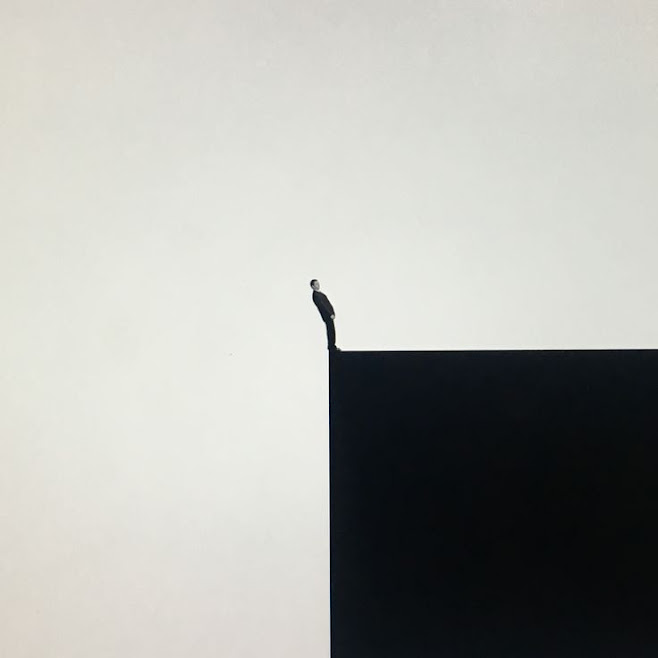Illustration & Visual Narrative:Assignment 1 Decisive Moment
TAO YUZE(0366967)
illustration and Visual Narrative
Assignment 1 Decisive Moment
For this assignment, you must find a related article/story that discuss Urban Legends. The legends maybe local or international. The artstyle must be derived from Art Deco.
- Weight: 20% of the final grade
- Duration: 3 weeks
In this assignment, you will create a minimalist editorial illustration based on an urban legend of your choice using Adobe Illustrator. Your illustration will be designed for a digital media publication and should include minor animations to enhance engagement.
- Choose an urban legend that interests you and aligns with the editorial theme.
- Research the chosen legend thoroughly and gather visual references.
- Create a concept mood board to explore the style, color scheme, and overall visual direction.
- Write a brief description of your chosen urban legend and how you plan to interpret it in a minimalist style.
- Begin sketching your editorial illustration. Focus on creating a clear and compelling composition.
- Develop your illustration in Adobe Illustrator. Pay attention to clean lines, simple shapes, and minimalism.
- Experiment with the use of color and typography, keeping the editorial context in mind.
- Start planning the minor animations you intend to incorporate.
- Refine your illustration, paying close attention to details, balance, and visual impact.
- Add animations to your design using Adobe Illustrator or other animation software.
- Test the animations to ensure they enhance the overall narrative without being distracting.
- Write a short artist statement explaining your design choices, including how your illustration reflects the chosen urban legend and the editorial context.
- Submit your completed editorial illustration as a high-resolution digital file (preferably vector format).
- Include a link to a presentation or video demonstrating the animations.
- Submit your artist statement and any process documentation.
Your assignment will be evaluated based on the following criteria:
- Concept and interpretation of the urban legend (20%)
- Design quality and minimalist style (30%)
- Effective use of color, typography, and layout (20%)
- Integration of minor animations (15%)
- Artist statement and process documentation (15%)
1"The people who are controlled by the mind are actually mentally ill people, and they torture themselves through this fantasy, but in fact, the person who controls their mind is actually themselves, but they cannot get rid of it."
2"The so-called mind-controlled forces exist, and the mind-controlled people are really controlled, and the mysterious forces control public opinion to make these victims look like mentally ill people."
3"Mind-controlled people are psychopaths who support their lives by their controlled thoughts, sometimes they know that their thoughts are fake, but they still paralyze themselves, and when these bubbles are punctured (the thread that controls the puppet is cut), that is when they break down."
The idea of this sketch comes from the news that the victim of mind control jumped off a building and committed suicide, and suicide does cut the line of control in the mind of the person being mind-controlled, but is it really worth it?
The fall in the sketch represents both the physical act of jumping off the building and the endless helplessness of the mind-controlled victim, with part of the rope breaking at each stage of the fall, representing the gradual disappearance of the controlled hallucinations in the victim's mind. This sketch can also be brought into my third idea: as the illusion of control is punctured, the victim's life begins to crumble.
It can be used as a static illustration when three actions appear in a picture at the same time and can be converted to animation if three actions are used as different frames of the animation."
After much feedback, I decided that the Mind Control theme was not suitable for further work and that I should choose a new urban legend, so I recreated the draft and electronic finish
 |
| all in one 2023/11/16 |
 |
| digital_final 2023/11/16 |
google drive:https://drive.google.com/file/d/14nSlahTOl3XV5sUzfH9VUuLssboFJWZv/view?usp=drive_link
 |
| Frames |
Assignment Brief: Digital Triptych - Exploring Scott McCloud's Transitions
Referencing Scott McCloud's analysis of transitions in "Understanding Comics," you will select one panel before and one panel after the climactic turning point, surrounding a panel representing the turning point itself. Each panel will exemplify a different transition type, creating a digital triptych that showcases various narrative transitions.
- Review Scott McCloud's transitions: moment-to-moment, action-to-action, subject-to-subject, scene-to-scene, aspect-to-aspect.
- Select one transition type for each of the three panels: before, during (climactic turning point), and after the turning point.
- Identify specific moments or elements in the narrative that align with the chosen transitions.
- Create a digital triptych with three panels that clearly illustrate the chosen transitions.
- Use any digital medium (illustration software, graphic design tools, etc.) to craft the panels.
- Ensure coherence and narrative flow between the panels, capturing the essence of the transitions selected.
- Submit the completed digital triptych via the designated platform.
- Include a brief explanation for each panel, detailing the chosen transition and its significance in the narrative context.
- Ensure that each panel distinctly represents its respective transition type.
- Understanding and application of Scott McCloud's theory on transitions in creating the digital triptych.
- Clarity and effectiveness in using each transition to depict the sequential narrative.
- Coherence and visual storytelling across the three panels.
- Artistic execution and presentation of the digital triptych.
Submission deadline for the completed digital triptych is at the end of Week 11.
Moment-to-MomentAction-to-ActionSubject-to-SubjectScene-to-SceneAspect-to-Aspect
This assignment contributes 20% towards your final grade. Grading will consider adherence to instructions, effective application of transitions, narrative coherence, and artistic presentation within the digital triptych.









评论
发表评论